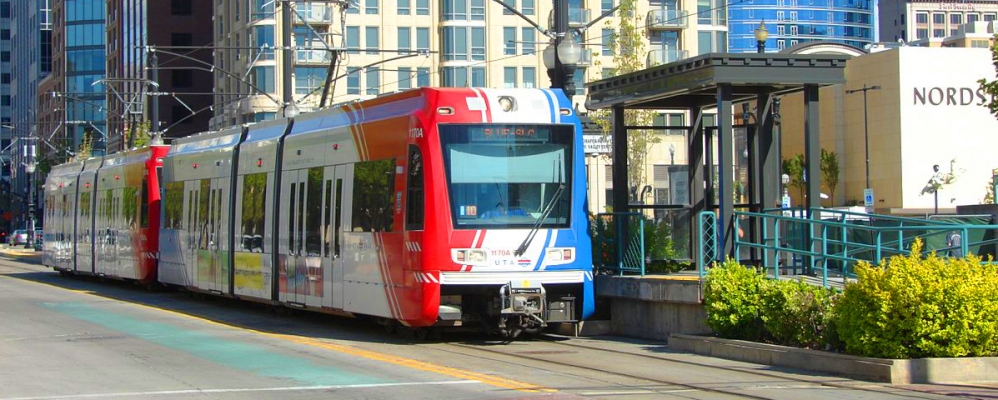TOD Beats TAD in Transportation Affordability

Transit-oriented development, or TOD, could be the “poster child” for sustainable urban development. It concentrates land uses, including commercial and multi-family housing, near transit stations so as to reduce car dependency and increase ridership. The benefits are manifold; increased community health, positive economic impacts, less harm to the environment and potentially greater social equity.
But what about affordability? In exchange for all these benefits, do TOD residents spend more money on transportation?
A new NITC study compared TOD with transit-adjacent development, also known as TAD; another form of urban grown that is sometimes almost-affectionately referred to as TOD’s evil twin.
Researchers Brenda Scheer, Reid Ewing, Keunhyun Park and Shabnam Sifat Ara Khan of the University of Utah sought to answer three research questions. First of all, they wanted to establish clear criteria for how to tell TOD and TAD apart.
Where TOD is mixed-use and walkable, TAD is the opposite: picture a lonely transit stop in the middle of a car-dependent suburb.
“A key difference between TOD and TAD is the urban core. We also identified a hybrid type of development, which has elements of both TOD and TAD. We had three distinguishing criteria: density, land use diversity, and walkability or street connectivity,” Park said.
Of the 549 stations they studied, spread out over eight regions, 11 percent of them were labeled as TOD: dense, diverse and walkable. One-fifth were named TAD, having the opposite urban form. The remaining 70 percent of the stations could be classified as hybrids.
After identifying the TODs and TADs in their study, researchers had two more questions:
- How do travel behaviors vary between TODs and TADs?
- How does transportation affordability vary between TODs and TADs?
With respect to travel behavior, one challenge was how to find the true impact of the built environment.
Households living in TADs tend to be more affluent, have more cars and be more auto-oriented than their counterparts in TODs. However, residential-self selection theory points out that those people might live there because they are auto-oriented, not the other way around.
To get around this difficulty, the research team used propensity score matching to make sample households comparable in order to control for residential self-selection. (For more on the data analysis, see section 5 of the final report.)
They found that a household in a TOD takes significantly shorter and fewer auto trips, and more transit and walk trips, than a corresponding household in a TAD.
“The results show that TOD motivates residents to walk more and take transit more, while using personal vehicles less,” Park said.
TODs were shown to be more affordable, too, in terms of transportation costs: average TAD households spend 15.6 percent of their total income on transportation, while average TOD households spend less than half of that—7.5 percent.
The hybrid type was found to be the least affordable, as it has lowest average household income.
This study offers practical policy implications, particularly for planners dealing with the in-between hybrid type, which represents the majority of station areas.
If a local government or transit authority converts a sprawled, single-use and unwalkable station area from a TAD into a Hybrid type—by, for instance, adding different land uses—they could expect small increases in transit and walk trips.
A hybrid type of station area could be changed into a TOD by adding density and decreasing block sizes, resulting in more walking.
The cumulative change from TAD to TOD could encourage residents to drive less, walk more, and take more trips on transit; all of which can have positive impacts on the city’s environment, society and economy.
The study also offers new contributions to research. The eight regions studied—Atlanta, Georgia; Boston, Massachusetts; Denver, Colorado; Miami, Florida; Minneapolis-St. Paul, Minnesota; Portland, Oregon; Salt Lake City, Utah; and Seattle, Washington—represent a larger sample than the one or two regions studied in most of the existing literature. Additionally, the use of cluster analysis to classify the types of station areas offers a more objective and measurable approach than previous work.
For more information, visit the project page or download the final report.
